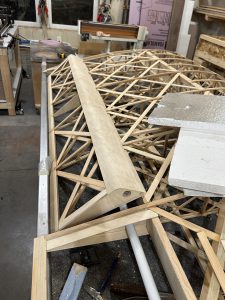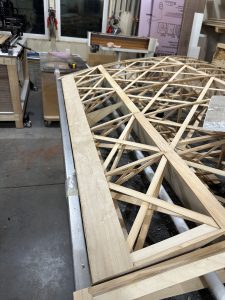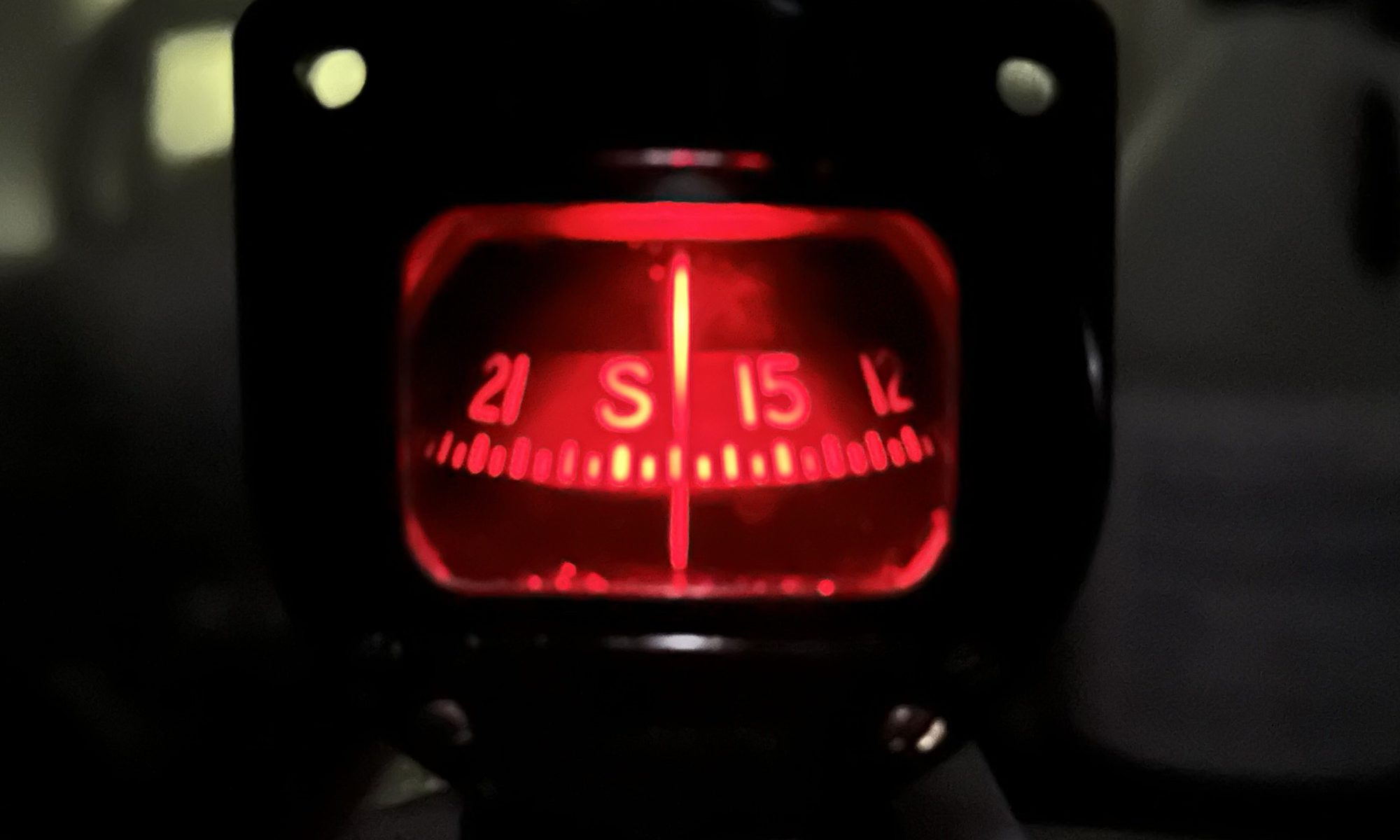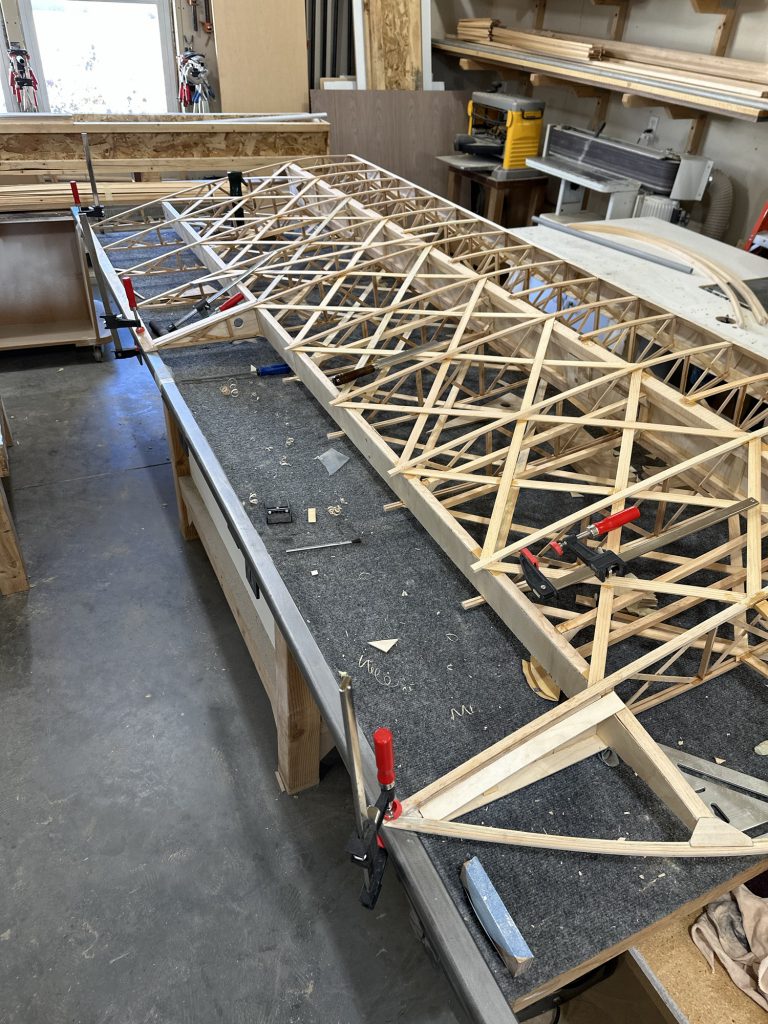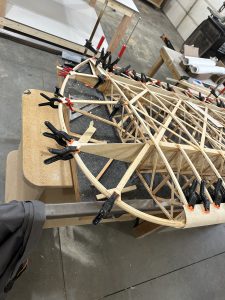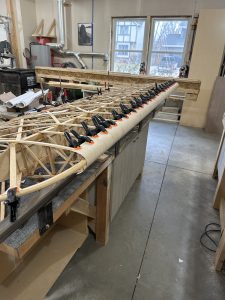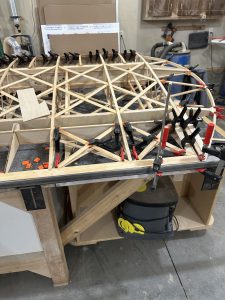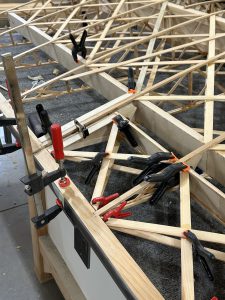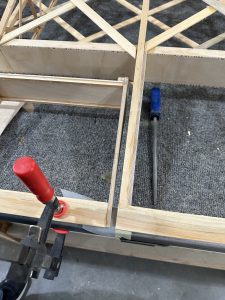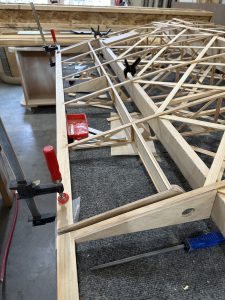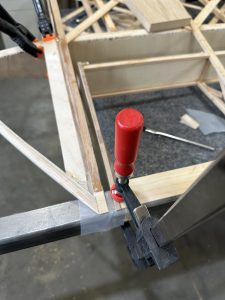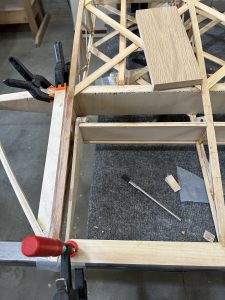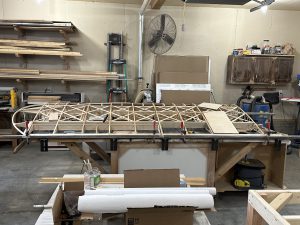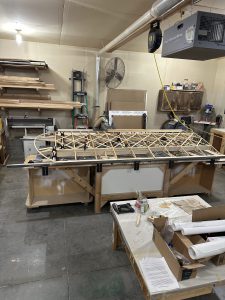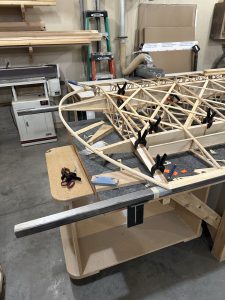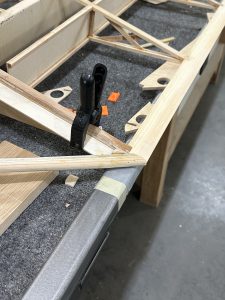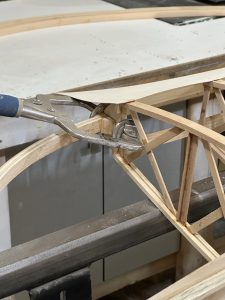It’s been an on-and-off couple of weeks. I’ve had a persistent cold/bronchitis that has kept me away from the shop for days at a time. On days I do feel like working, I’ve got a house cleanup project that’s been sucking time as well.
This evening I got over to have a look at the aileron. I’m not thrilled with the plywood, to be perfectly honest, but I believe it will be OK. I re-glued a couple of the geodetic braces and glued down a couple of corners of the thin plywood that were loos and/or slightly de-laminating. I think the fabric would probably have been sufficient, but I want to make things as close to perfect as practical. I’ve got a list of things to do differently on the next three ailerons.
I got a few corner blocks installed to make sure the plywood stiffeners don’t flex or bow. The pans don’t call for them, but I’ll feel better knowing they’re there. I also got the ends of the aileron nose plywood trimmed and sanded flush with the ends of the aileron. There’s one more round of gluing to do, then I can use a router to put a radius on the lower front edge and it will be done. I did check the aileron travel; 22 degrees up and down will not be a problem.

